Resources by Erik Hammerstrom
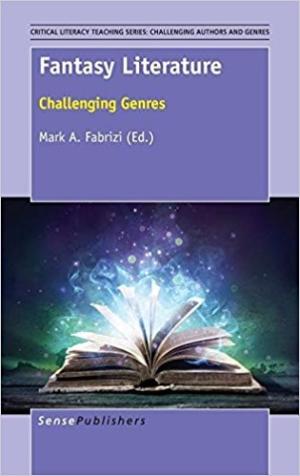
Although it is not immediately apparent from the title this is a book on pedagogy, and it contains many useful ideas for the teaching of religion and theology. Each of the chapters in this volume suggests a way in which teachers in secondary and university education can use popular works of Fantasy Literature to teach critical literacy. Fantasy Literature is difficult to define, but it is hard to deny the enormous influence it has had on popular culture. Rather than dismiss this literature as mere genre fiction, the authors of this book see the popularity of Fantasy Literature as an opportunity to reach and engage a variety of students in serious questions about race, gender, class, and privilege. The book begins with a brief introduction that defines critical literacy broadly, noting that as a blanket term it encompasses Marxist, feminist, postmodern, and other critical theoretical discourses. Following this, most of the chapters in the volume focus on one or two works of Fantasy Literature, demonstrating how they can be used to teach an important concept in critical discourse. Here I will mention a few examples. In the first chapter Neil McGarry and Daniel Ravipinto assess the conservative, patriarchal, and heterosexist autocratic ideology at play in the works of J. R. R. Tolkien and George R. R. Martin. Given the current popularity of the latter’s works, this chapter could inspire a variety of pedagogical interventions. Martha Johnson-Olin reads a current text using historical example in her chapter, “Strong Women in Fairy Tales Existed Before Frozen: Teaching Gender Studies Via Folklore.” Several other chapters use the Harry Potter series: Editor Mark Fabrizi’s chapter uses Harry Potter to teach Machiavelli, while Claire Davanzo uses the actions of Dolores Umbridge and Cornelius Fudge, especially in Harry Potter and the Order of the Phoenix, to teach Marxist ideas about oppression and resistance. While most of the chapters in the book examine one or a few works in light of one critical concept, Nathan Frederickson’s chapter follows a different approach, and is the chapter that would likely be of greatest interest to the readers of this site. In his chapter, Frederickson lays out his plan for a course on religion and Fantasy Literature that focuses on critical pedagogy. This course is divided into eight sections: (1) defining key terms, (2) colonialism, (3) capitalism, (4) perspectivism and pragmatism, (5) feminism and queer theory, (6) interrogating the self, (7) royal ideology and the monomyth, and (8) critical pedagogy and reflexivity. Frederickson provides annotated lists of suggested texts for each of these sections. He also helpfully breaks these lists into those works that are best suited for high school, undergraduate, and graduate classrooms, making this syllabus useful for a wide range of educators. The syllabus chapter is particularly useful, but given its broad scope, it is likely that many teachers of religion will find helpful ideas and suggestions in this book for weaving popular culture and critical literacy into their courses.
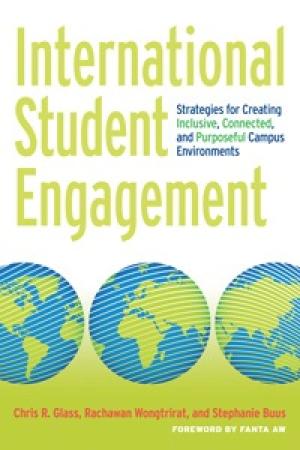
In 1950, just over 25,000 foreign students were enrolled in institutions of higher education in the United States. At the time this review appears on the Internet, that number will be close to 1 million (1). While many schools’ admissions offices have sought to increase their enrollment of international students as an important source of revenue, those who work at colleges and universities in the U.S. should understand that the integration of so many international students into campuses poses a special challenge. If faculty and administrators do not do it well through intentional policies and practices, institutions run the risk of failing the students who have chosen to come to their schools. This book seeks to identify the types of campus environments that lead to the greatest flourishing and growth for international students. The authors draw from two primary types of data in order to discover best practices for integrating international students on campus. They combine analysis of the big data provided by the ongoing Global Perspective Inventory with stories from individual international students. As they put it, the authors’ goal is to use both the “big stories” and the “small stories” to learn what factors contribute to flourishing for such students. The small stories are one of the real strengths of the book, as they are drawn from a variety of schools: small private liberal arts colleges, large state universities, and community colleges are all represented. Over the course of the book, the authors tackle a number of big issues that they see as central to international student flourishing. Individual chapters are devoted to: how diversity is recognized and addressed in the classroom; how international students are involved in campus student leadership; the roles that friends and peers, family, and social media in helping students; and what types of campus contexts create a sense of belonging. Ultimately, the authors conclude that intentional campus-wide policies and practices that support integration of students into many different aspects of campus life are the most successful. They give a number of specific suggestions for best practices, which are well summarized in the last chapter of the book. One of their central arguments is that such measures should not be limited to particular offices (the advising office, the admissions office, and so forth), but that entire campus cultures need to be adjusted, and that this requires buy-in not only from administrative units, but from academic units as well. This book provides much to think about, and would be useful for people in a number of different positions within academia. It is a welcome contribution at a time when faculty and administrators are engaging with the question of what it means to have increasing numbers of international students in college, university, and seminary classrooms.
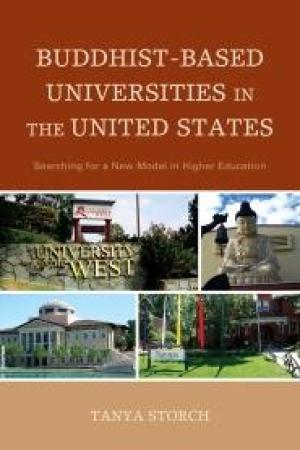
Expressing her concern about the current direction of higher education in the West, Dr. Storch argues that we can learn from the pedagogical principles of four “Buddhist-inspired” universities in the U.S. The first four chapters of this slim book each focus on one of these universities. Each is “a university that is state-accredited, which offers degrees in liberal arts and professional fields, and at the same time uses Buddhist pedagogical principles” (vii). Each chapter begins with a one to two page description of the school’s campus and the values its landscape and architecture embodies. This is followed by a brief biography of the male leader who founded the University or its parent Buddhist organization. These biographies, which occupy roughly a third of each chapter, are taken from official materials published by the organizations. The final two sections of each chapter review describe the historical founding of the school, its curriculum, and the impressions of its students. Data is drawn from websites and other promotional materials, and a few interviews. The last section of each chapter outlines the Buddhist pedagogical principles used at these universities, and the impact the author sees these having on students. The fifth and final chapter is the most engaging part of the book. Here the author discusses Buddhist pedagogical principles in three categories. (1) “Mindfulness”: Even though traditional meditation practice is not required, or even taught, at all of these schools, an atmosphere of mindful engagement is cultivated, and this is beneficial for students and faculty. (2) “Interconnectedness of all life”: These schools emphasize this principle inside and outside the classroom. Students are treated as real people, not as consumers; there is plenty of green space and fresh air in the classrooms; and values of environmental protection and vegetarianism are promoted. (3) “Right motivation for giving and receiving education”: These schools resist the pervasive contemporary tendency toward the commodification of all things, especially education. Students are taught values instead, and faculty and administrators treat students with compassion. This book concludes with a reflection on two of the pedagogical themes of the book: the teaching of meditation and ethical education (meaning an education that is both ethical toward students, and that teaches students to be ethical themselves). There are many places where the author could have deepened her inquiry. For example, how much do the educational models described here, which focus on educating the whole person and a commitment to values, represent a novel approach to education, and how much do they repeat already well-established models of liberal arts education? Also, although other Asian religions have not established comparable schools in the U.S., there is a long history of religiously-based liberal arts education, such as Jesuit Universities. How do these different approaches compare? Ultimately, this book is short in length and narrow in scope. The first four chapters range between thirteen and eighteen pages, without notes. The most substantial chapter is the fifth, and it could easily have stood alone as a journal article. This chapter raises a few important points about Buddhist pedagogical principles, but the book as a whole seems only half finished, and at this price it is difficult to recommend it to the readers of this site.
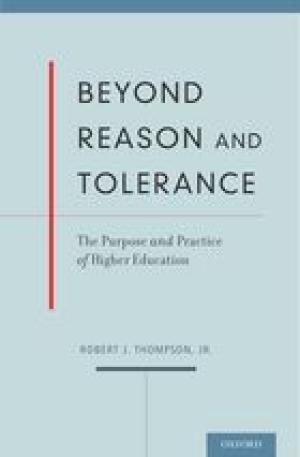
The purpose of higher education is widely debated, both inside and outside of the academy. The major contribution offered to these discussions by Robert Thompson, a professor of psychology with much experience in administration, lies in his summary and synthesis of findings from the fields of psychology and neuroscience as they relate to the cognitive development of students. In Beyond Reason and Tolerance, Thompson focuses on students within the age range of “emerging adulthood” (late teens to mid-twenties), and he summarizes recent scholarship on this group in Chapter 2. He argues that colleges and universities have a civic responsibility to emphasize education that assists student development in three areas: personal epistemology, empathy, and self-authorship. Separate chapters are dedicated to discussing current research in each of these areas, and they form the core of the book. For example, in Chapter 3 Thompson argues that humans’ attitudes toward knowledge change as they age. First, they see knowledge in absolute, black and white terms. Around the time of emerging adulthood, most move to the opposite extreme, and see knowledge as mostly contingent, and based upon one’s perspective. Thompson says that higher education should work to help students reach the third stage, in which they recognize the contingency of knowledge but still understand that there are better and worse arguments, and better and worse forms of evidence one can use to validate one’s ideas. The need to help students develop metacognitive skills about their own knowledge-making is related to one of the main themes of the book, which gives it its title. This is the notion that colleges and universities should be working to help students develop the skills needed to approach difference – ethnic, racial, cultural, and religious – in a more nuanced way than the uncritical position best exemplified by the now-common expression “It’s all good.” Giving students the opportunity to take positions and defend them with sound, rational arguments is essential for them as they develop their epistemology, empathy, and self-identity, all of which correlate strongly to increased levels of post-college success. This book does an excellent job arguing for the continued relevance of higher education in society, and its summary of current work on cognitive development is stimulating. That said, the recommendations it gives on how to help students in their cognitive development are generally aimed at larger questions of university structure. Chapter 6 focuses on campus culture, especially in terms of diversity and the modes of diverse connections that most positively impact students’ development. Chapter 7 focuses on developing new curricula and the new degrees they may support. This chapter also emphasizes the positive benefits of undergraduate research, study abroad, and service learning. Beyond pointing to studies showing the benefits of these kinds of programs, little is said that is applicable at the level of the classroom. This was the greatest missed opportunity in the book. I would have liked to see more concrete suggestions about activities and strategies that could be incorporated into existing courses to encourage cognitive development. Classroom instruction does not appear to have been his primary target, however, and he should be praised for what he does do: give faculty and administrators useful ways to speak about the importance of education in terms of current cognitive science.
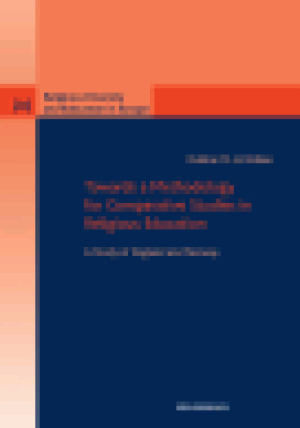
The central questions of this study are how religious education (RE), as a part of public secondary school curricula, differs between England and Norway, and what accounts for these differences. To answer these questions the author analyzed documents reflecting national debates about RE in public schools, examined policy statements produced by the British and Norwegian governments, cited studies conducted by the European Union, and carried out limited ethnography at six secondary schools (three in Norway and three in England). This study bears the marks of having been a dissertation, and is deeply self-conscious of its methodology. Bråten cites a broad range of theoretical and methodological orientations put forth for the study of RE in Europe, settling on two frameworks that offer the greatest utility for answering her questions. The first framework, which provides the structure for the book, is that of “levels of the curriculum.” After an extensive, if somewhat dry, literature review, Bråten compares differences between England and Norway in increasingly narrow fields. These are the societal, institutional, instructional (teachers), and experiential (pupils) levels. Bråten thus first gives a broad overview of the forces at work at higher levels of organization in the planning and execution of RE curricula before describing how it is taught and received in actual practice. In each chapter she applies the second of her two main methodological frameworks: an assessment of the supranational, national, and subnational forces that have impacted developments at each curricular level. For example, primary among the supranational forces she identifies are globalization and pluralism, and among the national forces are the differing historical relationships between state, religion, and schools within the two countries. Bråten found that the teaching of RE as a multi-faith, non-confessional subject began earlier in England than in Norway, likely as a result of England’s history of relatively greater religious plurality. Apart from the formative influence of scholars within the secular field of religious studies, curricular developments in England tended to happen “from the bottom up,” and tend to be more diverse owing to the greater diversity of public schooling options. Norwegian RE, on the other hand, has tended to develop “from the top down,” and places greater emphasis on Christianity than English RE. Curricular developments in Norway were also most influenced by departments of theology, unlike in England. All of this has led to differences in how RE curriculum is executed in the two countries, but not to as many differences in how it is received by pupils. Given that most of the readers of this journal are involved with higher, not secondary, education in North America, I would suggest this study might be useful for faculty in the following ways. First, Bråten poses interesting questions about the importance of RE (mostly having to do with preparing pupils to be tolerant citizens in pluralistic societies) that are important for faculty and administrators to consider at institutions that require the study of religion as part of general education or liberal arts requirements. Why is RE considered necessary? How do students receive not only the content of what is taught, but the messages about why such courses are important? This book would also be of use for thinking about the supranational, national, and subnational forces that have impacted how and why we teach what we teach. Bråten raises many questions along these lines, and provides one multi-disciplinary model for how to answer them.